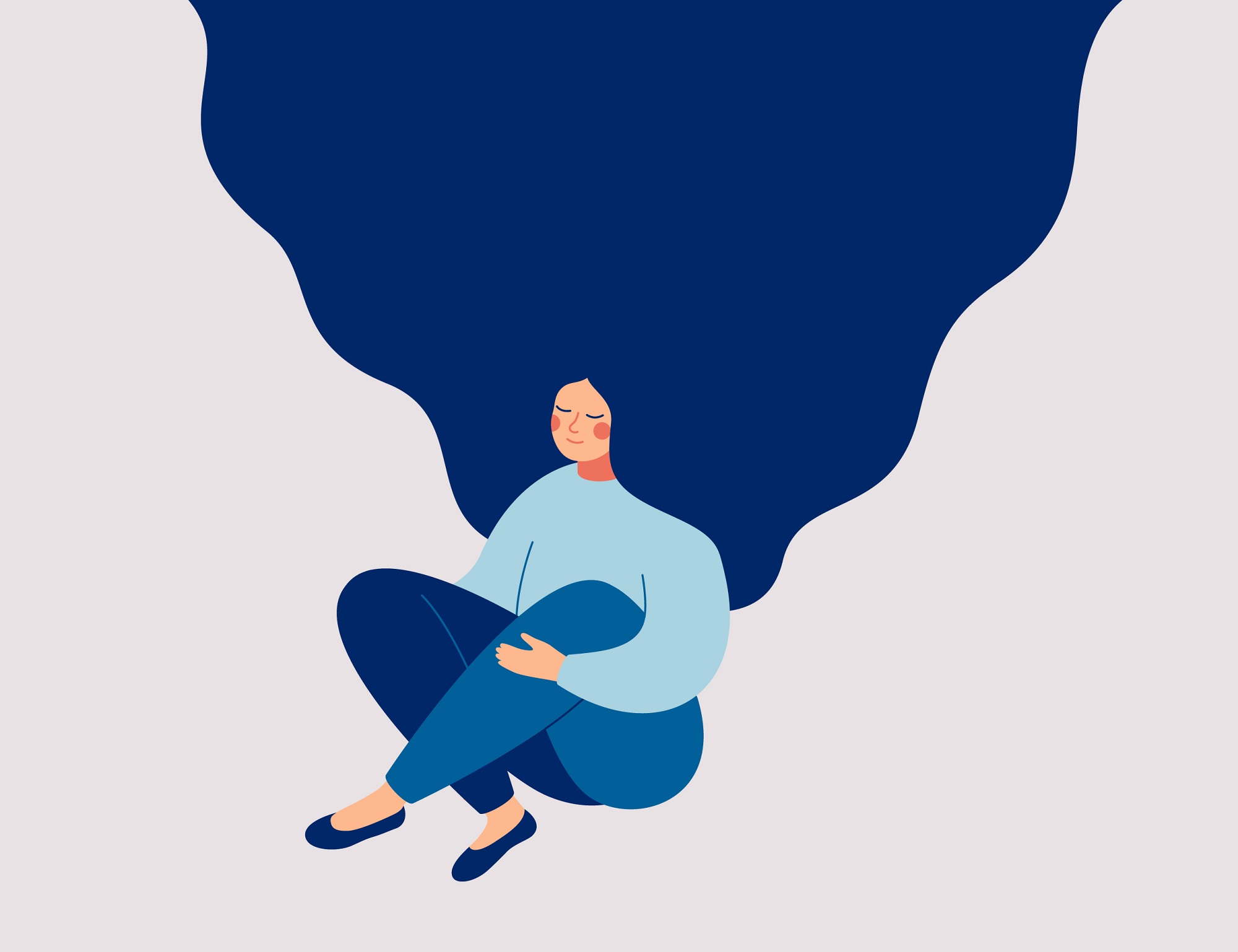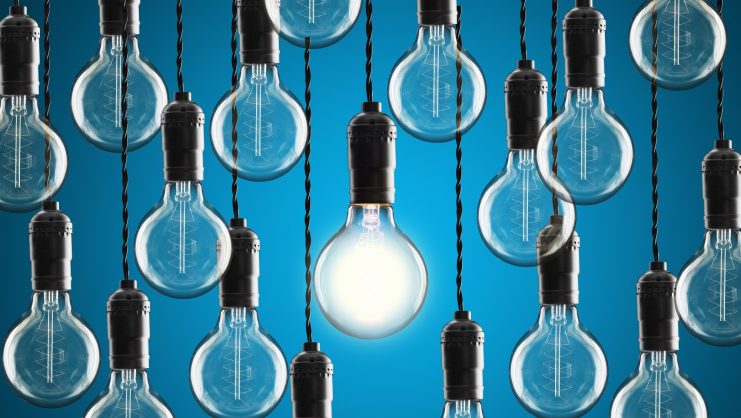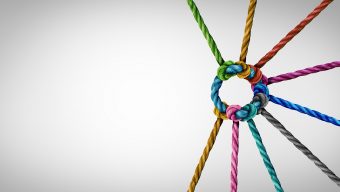Amélie de Marsily – Academic Director at the Center for Health, Well-Being & Happiness at IE University:
Within the past year we have all collectively and individually experienced a period of incredible change. The pandemic has affected the way we learn, work and live, how we interact with colleagues, friends, family, and even strangers. This change has not been easy to come to terms with and it often might feel better to simply accept that our lives are the way they are – at times seeming chaotic and messy and in other moments exciting and full of opportunity. We are faced with our humble, bare, existence and the need to find meaning within it all becomes more raw. Despite everything – and actually, because of everything – we are still pushing forward. We are still learning, still communicating, still creating, still innovating.
What is the secret to managing all this change that appeared in such little time? Resilience, which has now become the single most important personal skill a person or organization can develop to be happier, healthier, and more successful.
Resilient people:
* Are better able to withstand stress and heal themselves.
* Have the mental focus and determination that is needed to be successful.
* Can activate positive emotions when they need them most.
* Receive strength from their friends and family.
We have invited experts from a range of fields to discuss what resilience means to them, with the responses looking at:
- What we can learn from other nations around the world about tolerance to frustration and uncertainty in order to build an interconnected and interdependent world (Prof. Borja Santos);
- The need to develop our own rituals to meet the high demand for strong psychological resources (Prof. Bin Ma);
- The importance of “third spaces” in our potentially recurrently confined cities as spaces that are neutral and welcoming where conversation can flow (Prof. Cristina Mateo);
- How our social institutions need to apply flexibility, as their pace of change is slower than our times (Prof. Antonio Aloisi);
- How diverse and decentralized teams using creative processes which avoid narrowly-defined questions provide strong foundations to manage stress and setbacks (Prof. Andrew McCarthy).
Resilience is also about being able to drop into the present moment, connect with the powerful alternations of life, and knowing that by allowing them to exist, we have the power to pass through them and alight, albeit clumsily, on the other side.
Borja Santos – Professor at IE School Of Global & Public Affairs
I learned what resilience means in the rural areas of Ethiopia. Over five years, I worked with the local municipalities to reinforce their ability to face meteorological phenomena, epidemics, and other threats. Every year in Ethiopia, between seven and 10 million people are affected by crises or disasters that require humanitarian aid. I was able to meet many families who, year after year, found the strength to recover from a bad harvest, helped their children recover from measles, or helped their neighbors overcome sudden and severe floods.
This experience helped me to become aware of the inherent characteristics of a resilient society. They are those societies that face adversity with perseverance, with positivity, and with tolerance towards frustration and uncertainty. Such a society does not ask what others can do for them, but rather what they can do for others. A resilient society is also empathetic and conscious, where members support each other through adversity. It is a society with the hope to believe in a better future.
Resilience, however, is not innate. It must be built and strengthened. One must prepare oneself with the proper resources and knowledge to build positive and strong relationships. In today’s globalized world, the actions of one region affect everyone. Resilience is key to the interconnected and interdependent international system that exists today. We must build a resilient and supportive world that is capable of overcoming challenges like COVID, fighting against climate change, or reducing inequality.
Bin Ma – Professor at IE Business School
The global COVID-19 pandemic has placed everyone in a time of crisis and uncertainty, causing tremendous stress for all of us. More than ever, we have to be aware of our psychological states and strategically build personal resilience in this challenging period. During this process, nurturing one’s psychological resources is critical. Psychological resources refer to the positive psychological entities that help an individual obtain a sense of control over their own life. Psychological resources are more important when the negative effects of the environment are a priority problem, which is exactly the challenge we are currently facing on a daily basis. In order to guide the nurturing process of psychological resources, I suggest this 360-degree model.
Meditation and mindfulness. The first step of nurturing one’s psychological resources is to check in with the current state. A meditation session with a focus on being aware of how you feel right now can be very helpful. Meanwhile, meditation helps build a sense of mindfulness, which lays out a map showing the sources of your stress, your problems and their priorities, and possible solutions. All of these serve as the start of your belief of your control over your life.
Household members, family, and friends. Social activities, especially those with shared emotions, are helpful for boosting one’s psychological resources. Due to health reasons, you may not be able to meet everyone in person as frequently as you could, but you can still engage in virtual social events to update each other, talk about your feelings, and share emotions. Although not a perfect substitute for actual social activities, these virtual activities serve individual psychological and emotional needs in a similar manner.
Daily job and coworkers. For those who are working on a regular basis, now is the opportunity to develop your relationship with your coworkers further by sharing and empathizing with common concerns. This is a complementary source, besides the ones above, for recharging your psychological resources in a professional context.
Psychological resources burners. While building psychological resources is a constant effort we need to invest, it is equally important to reserve such resources and use them wisely for a sustainable lifestyle. That said, we also have to be aware of the occasions when we are burning ourselves out emotionally, such as extended hours of news watching.
This series of nurturing strategies for psychological resources, consisting of self-check, recharge, and wise usage of such resources, will hopefully provide practical guidance for every one of us to develop our personal resilience and handle this tough time more easily.
Cristina Mateo – Associate Dean of IE School of Architecture and Design
Various quality of life surveys have found that a ‘livable’ city generates a sense of community and offers hospitable settings for all, creating a sense of autonomy and identity.
Social sustainability is a key part of sustainable development, and resilience is an essential characteristic within this. For me, a resilient city means a city that is prepared for shocks, such as the sudden blow suffered during the COVID-19 pandemic.
Under lockdown rules, our cities demonstrated how ‘third spaces’, places which are not homes or workspaces, are areas that preserve the urban experience that was largely removed from our lives, and their removal caused people to feel lonely and isolated.
Although loneliness is not recognized as a clinical disorder, the World Economic Forum, citing a study by Utah’s Brigham Young University, has identified the condition as one of the greatest threats to people’s survival. Research carried out before the COVID-19 pandemic had already shown that social isolation can increase the risk of early death by up to 50%.
What are third spaces?
Sociologist Ray Oldenburg coined the term “third space” in 1989 to refer to a place that is not the home (first space), and not work (second space). It is a space where people gather and interact, it is both neutral and welcoming, where people tend to return and a sense of belonging is naturally developed. Social theorists Homi K. Bhabha (1990) and Edward Soja (1996) described the third space as a transition space, a non-physical place where hybrid identifications are possible, and where cultural transformations can happen in everyday life.
Their main characteristics are:
- Neutral ground
- Inclusivity
- The main activity is conversation
- Accessibility and accommodation. Welcoming, one can go alone and find an acquaintance
- Regulars
- Low maintenance
- High-spirited mood (encourages returning)
- Home from home
In cities, third spaces are a community’s living room, where individuals can freely gather to exchange ideas. They are spaces which foster human interaction. We are talking about parks, open squares, tree-lined walkways, they often are in-between spaces, that enact our identities and sense of belonging, making for sustainable and resilient urban living.
The growing challenge for our cities in the COVID-19 age is to become healthy again. The big challenge for cities and city dwellers will be to combat the silent global epidemic of loneliness, and third spaces will lead this fight to make cities more resilient.
Let’s involve architects and designers in the effort.
Antonio Aloisi – Professor at IE Law School
In the last few years, we have been bombarded by compassionate discourses on the importance of being “resilient.” As a result, this characteristic – traditionally associated with materials capable of withstanding traumatic changes in their environment and still functioning – has dominated our collective imaginary. Admittedly, being under stress is becoming the new normal: technological advances, globalization, climate change, health crises, and demographic shifts are forcefully reshaping the labor markets, straining the regulatory capacities of supranational and domestic legislators.
Regrettably, the buzzword is now perceived as an empty concept because of its exorbitant use, but despite this overexposure the term is fit for purpose in these complex times. However, we should make sure that its significance is protected, shared and put in context. No matter how it is defined – resistance, tenacity, strength, determination, perseverance – the ability to resist adversities, learn from mistakes, overcome failures and be adaptable is much needed. It is part of human nature and, although it cannot be taught, it can be trained.
The philosopher Eric Hoffer wrote: “In a time of drastic change it is the learners who inherit the future. The learned usually find themselves equipped to live in a world that no longer exists.” Being prepared and eager to learn is a precondition for resilience. Given the constantly changing nature of our societies, understanding the rationales of the legal principles and rules is crucial when it comes to resorting to the regulatory arsenal to interpret, regulate and govern transformational new realities. In particular, studying the evolution of social institutions and labor regulation can offer a critical insight into unprecedented instruments, including those adopted to protect workers, support economies and promote business continuity during the COVID-19 pandemic. By way of example, the health and socioeconomic emergencies have demonstrated how policymakers can adapt or reinvent rules to accommodate change by creating what I call a “parallel labor law”, a new subject with new rules and exceptions made necessary by an unparalleled scenario.
Think of working from home, a quantum leap in workplace organizational culture, combining the availability of new technologies, the elasticity of some job tasks, and the pressing need to mitigate the risk of spreading the virus. This proves once more that the nature of the labor market is mercurial by default. At the same time, this rapid transformation forces us to develop a critical attitude towards the promises and perils of the digital age.
My research interests span employment law and the digital revolution. In a recently co-authored paper, I argue that, contrary to warnings about the imminent fall into disuse of the existing legal frameworks in the wake of technological disruption and the rise of alternative business models, existing social institutions may well co-exist with authentic modernization, even in the era of automation, hyper-digital systems and platform work. Social institutions can be true innovation facilitators, upholding and accelerating the digital transformation, by providing legal solutions to genuine requests for flexibility.
Professor Andrew McCarthy – IE School of Human Sciences and Technology
Imagine a team working long and hard hours, on a difficult project for which they have been given the mandate of finding a particular solution. They make sacrifices – health, personal relationships, outside interests until, on-time and under-budget, they proudly deliver a solution. Unfortunately, unbeknownst to the project team, the data they had been using to understand the problem had become irrelevant in the middle of the process, and thus their solution was useless. Not only that, but the entire effort turned out to be a waste of their time and energy.
When a project has a weak foundation such as a narrowly defined question or a preconceived solution – or worse yet, both – a single event like a change in data can completely derail the team. When projects are set up in such a manner, it discourages the team from sniffing out questions which they weren’t explicitly instructed to follow, collecting more information, speaking to anyone outside of a narrowly defined list of internal stakeholders, or spending any time on possible solutions beyond their first and most feasible. The team’s process wasn’t able to recover from a setback; it wasn’t resilient.
My work in companies, communities, and classrooms focuses on the art and process of design and creativity. These processes are inherently resilient and promote resilience in practitioners. Like a healthy ecosystem, they promote decentralized networks of collaboration, knowledge, and activity. If the team had used an aggregate process of multiple, diverse but interconnected paths of investigation, ideation, prototyping, and testing rather than the traditional, single-track waterfall model, the process would not have entirely failed when the first path came to a dead end. We flex our creativity when we make various connections between experiences in order to come up with new concepts and modes of thinking. This creates a solid foundation from which a team can operate and manage stresses – such as a change in data – when they arise.
In design, limiting the possible paths a team can follow to uncover insights that may lead to innovation is rarely efficient. In creativity, we limit the quality and quantity of new and surprising connections when we consume monocultures of news, information, and other forms of inspiration.
Now, more than ever, we are concerned with how to develop our capacity for resilience in the face of trying times and an uncertain future. A resilient team is more likely to be successful and decentralization, diversity, self-renewal, and self-repair by means of self-adaptation and self-organization promote resiliency, qualities we cultivate in design and creativity.
© IE Insights.






